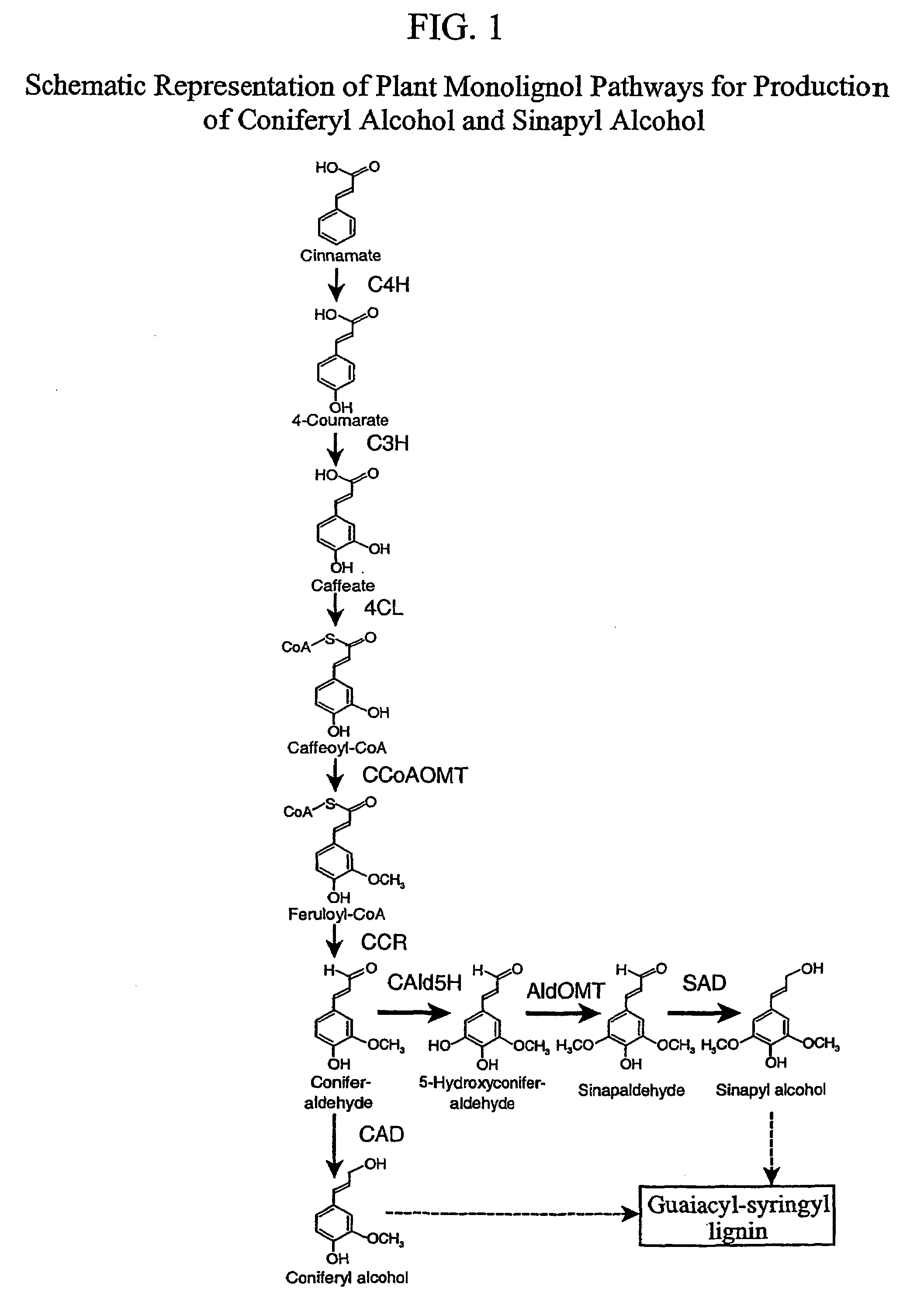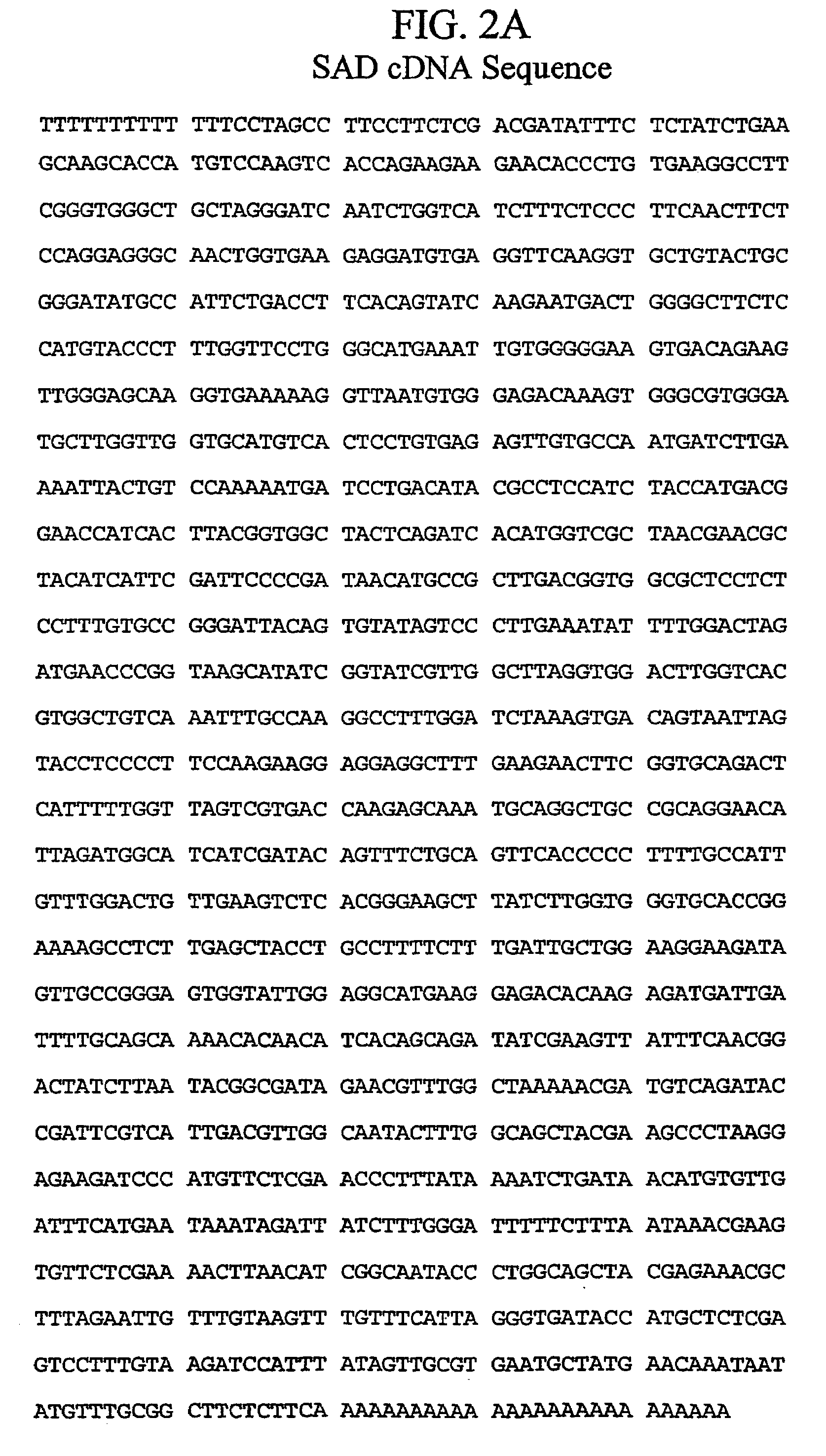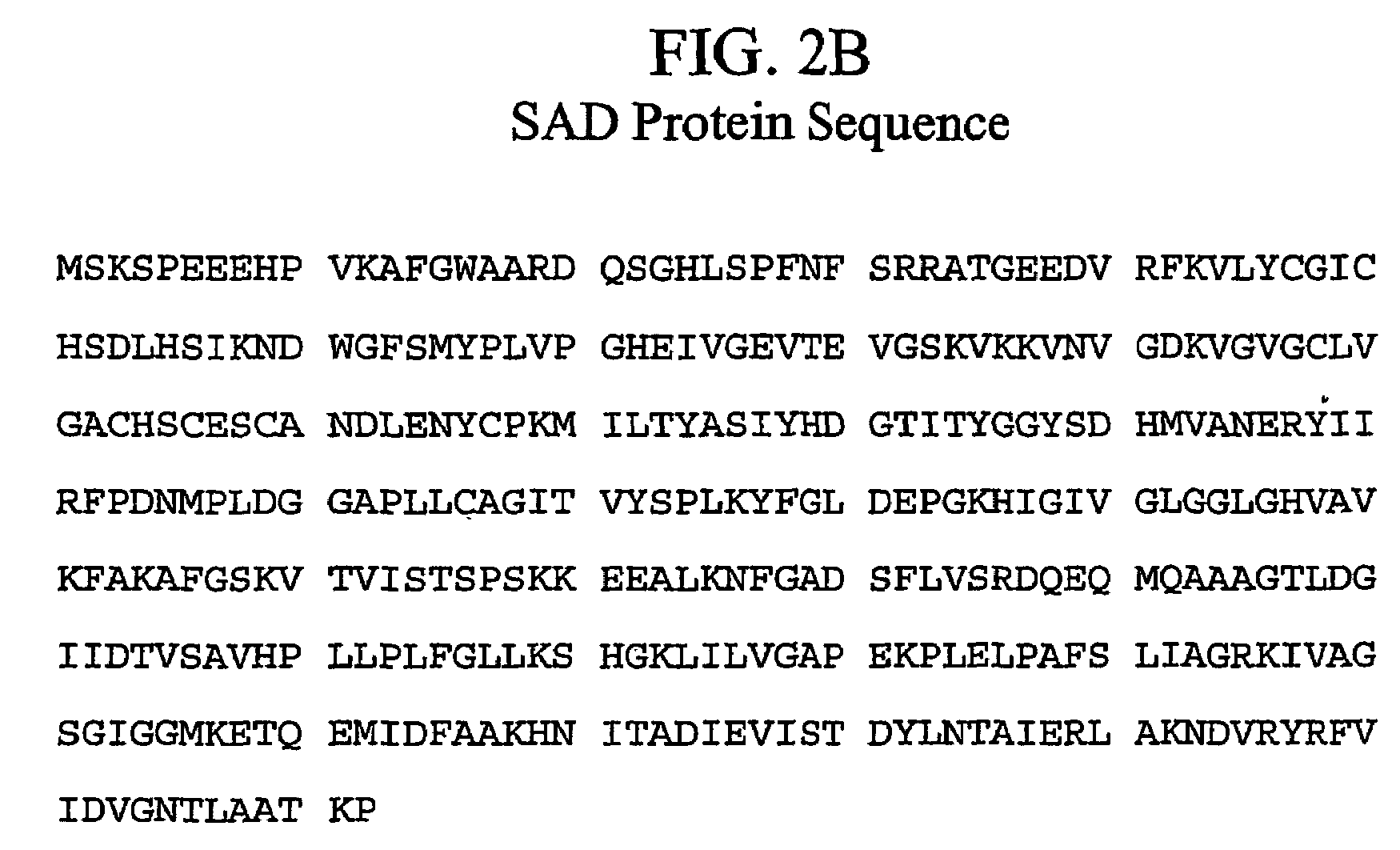Genetic engineering of syringyl-enriched lignin in plants
a technology of syringyl lignin and plant lignin, which is applied in the field of gene engineering of syringyl enriched lignin in plants, to achieve the effect of reducing the amount of sad for catalyzing sinapyl alcohol and increasing the production of syringyl monolignol
- Summary
- Abstract
- Description
- Claims
- Application Information
AI Technical Summary
Benefits of technology
Problems solved by technology
Method used
Image
Examples
example 1
Isolation of SAD cDNA from Aspen Populus tremuloides
[0067]An aspen developing xylem cDNA library was constructed in 8gt22A vector according to manufacturer's protocols (GIBCO BRL). The aspen CAD cDNA (GenBank #AF217957) was used as a probe to differentially screen the cDNA library under high and low stringency hybridization conditions. About 6,000 pfu from the cDNA library were lifted onto 4 individual nylon membranes. Two such blotted membranes were hybridized with 32P-labeled CAD cDNA probe under low stringency conditions (50° C.) and the other two under high stringency (65° C.). In this way, a total of 18,000 pfu were screened. High density hybridization signals were detected on membranes probed under either high or low stringency conditions. However, low density signal were detected only on membranes probed under low stringency condition. The high density signals on high stringency membrane were perfectly aligned with the high density signals on low stringency membrane, allowin...
example 2
Cloning of a Novel Alcohol Dehydrogenase Gene, PtSAD, from Aspen
[0069]To test the hypothesis of distinct CAD and SAD genes in angiosperms, CAD cDNA, PtCAD, was cloned from developing xylem of aspen and used to screen for related sequences in the same species. Low- and high-stringency differential screening of 2.4×104 plaque-forming units from an aspen xylem cDNA library (Wu et al., 2000) resulted in the isolation of two groups of positive clones. Group I contained 12 cDNAs with sequences identical to PtCAD. Sequences of the eight cDNAs constituting group II were identical to each other but differed from PtCAD. Two of the eight clones in group II were full-length cDNAs and were tentatively named PtSAD.
[0070]The open reading frame of PtSAD was 1086 bp, encoding a 39-kD protein with a pI of 6.69. The deduced amino acid sequence of PtSAD was 53% identical to that of PtCAD and ˜50% identical to that of other angiosperm monolignol CADs, but it exhibited insignificant identity (10 to 40%) ...
example 3
[0073]Aspen genomic DNA and total RNA from various aspen tissues were isolated as described (Li et al., 1997; Hu et al., 1998). To determine whether there are other PtCAD and PtSAD related sequences in aspen, a gel blot analysis was done with aspen genomic DNA digested by various restriction enzymes and hybridized with either PtCAD (FIG. 4A) or PtSAD (FIG. 4B) full-length cDNA probes. DNA and RNA gel blot hybridizations were performed under high stringency conditions (Hu et al., 1998). Probes were PtCAD or PtSAD cDNA labeled with α-32P-dATP (Amersham) using the DECA prime labeling system (Ambion, Austin, Tex.).
[0074]There was a strong single band in each lane, but a weak single band also was detected in each lane, perhaps evidence of a distantly related sequence. Together with our cDNA screening results, we interpret these data to indicate that PtCAD and PtSAD likely are the predominant members of a small gene family in aspen.
[0075]DNA gel blot analysis ...
PUM
| Property | Measurement | Unit |
|---|---|---|
| Fraction | aaaaa | aaaaa |
| Fraction | aaaaa | aaaaa |
Abstract
Description
Claims
Application Information
 Login to View More
Login to View More - R&D
- Intellectual Property
- Life Sciences
- Materials
- Tech Scout
- Unparalleled Data Quality
- Higher Quality Content
- 60% Fewer Hallucinations
Browse by: Latest US Patents, China's latest patents, Technical Efficacy Thesaurus, Application Domain, Technology Topic, Popular Technical Reports.
© 2025 PatSnap. All rights reserved.Legal|Privacy policy|Modern Slavery Act Transparency Statement|Sitemap|About US| Contact US: help@patsnap.com



